
The world is gradually moving toward a future that is less reliant on fossil fuels such as oil. But in the present, many of the world economies are quite dependent on the commodity. (These are countries most dependent on Russian oil.)
To determine the 25 countries most dependent on the oil trade, 24/7 Wall St. reviewed data on oil imports and exports from the the Observatory of Economic Complexity, an online data visualization and distribution platform. Countries were ranked based on the total value of oil imports and exports in 2020 as a percentage of their gross domestic product.
For nations with millions of barrels of proven reserves such as the Republic of Congo and Kuwait, the soaring price of oil over the past year has boosted their coffers. Besides Kuwait, the other nations on the Arabian Peninsula such as Oman, United Arab Emirates, and Qatar all rely on oil to bolster their respective economies.
Nations such as Malta, Singapore, and the Netherlands may lack proven oil reserves of their own, but they have become crucial shipping centers and trading and refining hubs, and the fees associated with the oil trade are a lucrative business for these countries.
On the other side of the equation are island nations in the Caribbean such as Antigua, Barbados, Trinidad and Tobago, St. Lucia, and the Bahamas, and islands in the Pacific, including Tuvalu, Nauru, and the Marshall Islands. They all have little or no proven oil reserves and export no oil. They are completely dependent on the importation of oil – as a source of energy and to fuel their economies. (This is the most import dependent economy in the world.)
Click here to see the countries that are most dependent on the oil trade
Click here to see our methodology
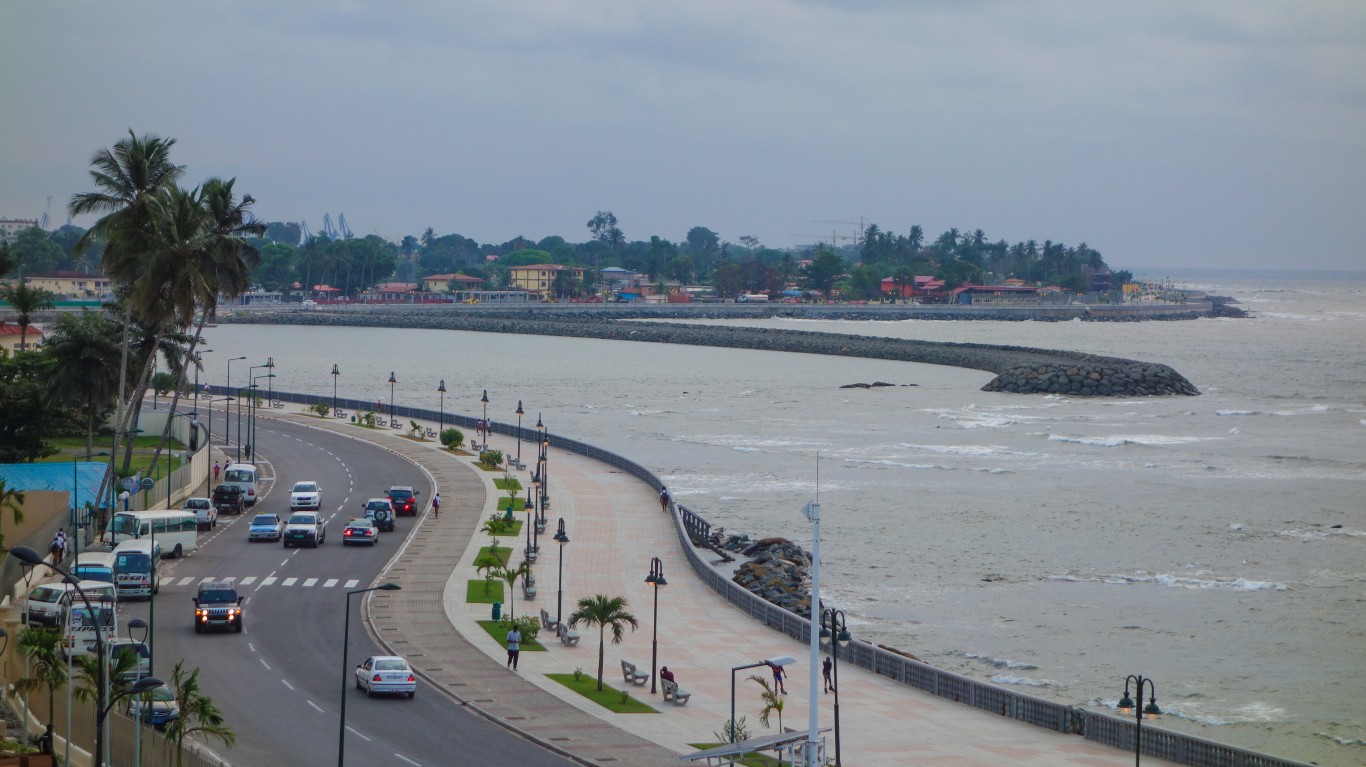
25. Equatorial Guinea
> Value of oil trade: 9.8% of GDP
> Oil exports, 2020: $2.5 billion
> Oil imports, 2020: $7.5 million
> GDP, 2020: $25.2 billion
> Total population: 1.4 million
According to a report from the Economist this past March, the economy of the African nation on the Atlantic coast will contract this year, but will resume expansion as energy production increases. Economists believe high oil prices in 2022-2023 will help boost the economy. Crude petroleum and petroleum gas are Equatorial Guinea’s top exports.
[in-text-ad]

24. Barbados
> Value of oil trade: 10.2% of GDP
> Oil exports, 2020: $11.1 million
> Oil imports, 2020: $380.9 million
> GDP, 2020: $3.8 billion
> Total population: 287,371
Oil on the Caribbean island nation of Barbados, where oil has been drilled since 1896, is produced by the Barbados National Oil Company Ltd., formed by the government in 1982. The nation produces about 1,000 barrels of oil per day, which is sent to Trinidad for refining. The country’s leading imports are refined petroleum and crude petroleum.
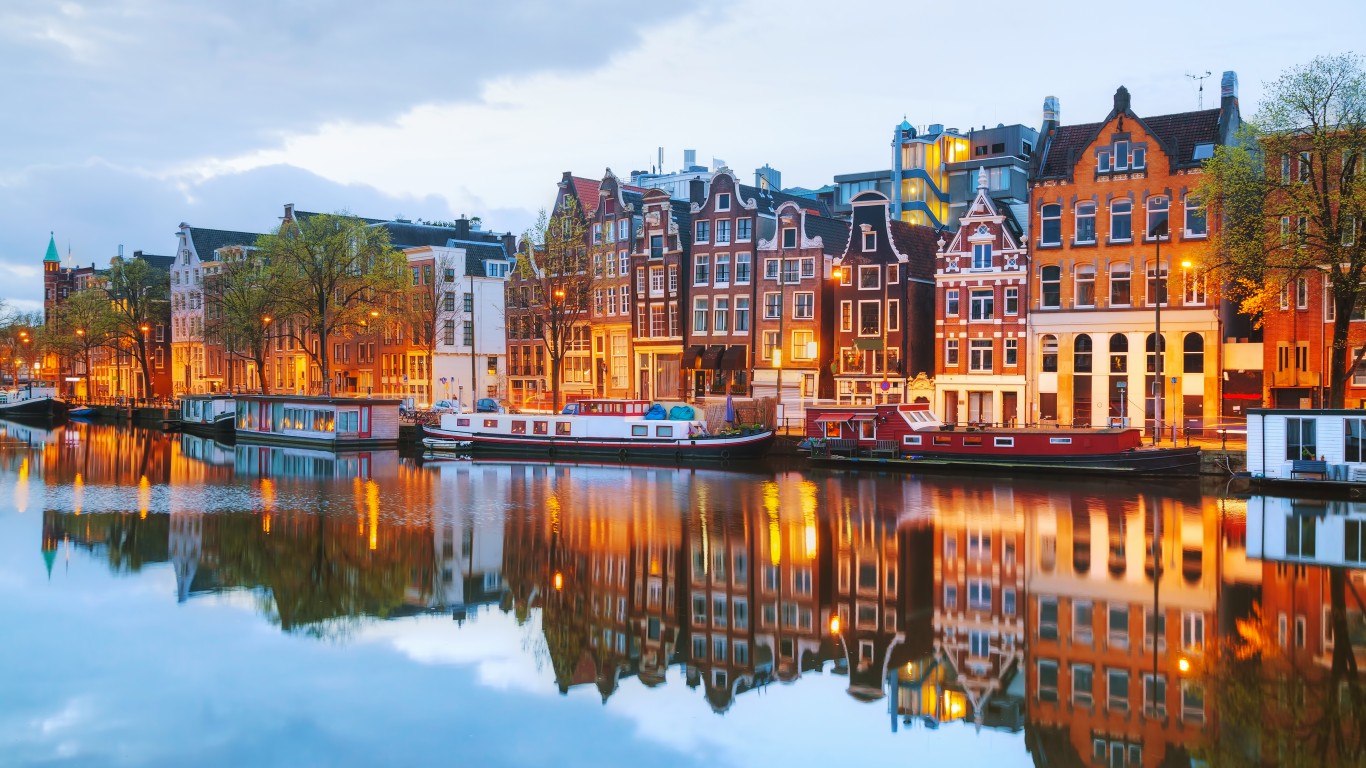
23. Netherlands
> Value of oil trade: 10.4% of GDP
> Oil exports, 2020: $41.8 billion
> Oil imports, 2020: $66.0 billion
> GDP, 2020: $1033.7 billion
> Total population: 17.4 million
The Low Country is a refining and trading center of oil for Europe, with large amounts of oil transiting through the port at Rotterdam. The Netherlands’ top export is refined petroleum, and its leading imports are crude petroleum and refined petroleum. The Netherlands has been increasing imports of oil from Russia since the beginning of the 21st century, with the share of Russian oil increasing from 6% of total volume of imported crude oil in 2000 to about 28% today.
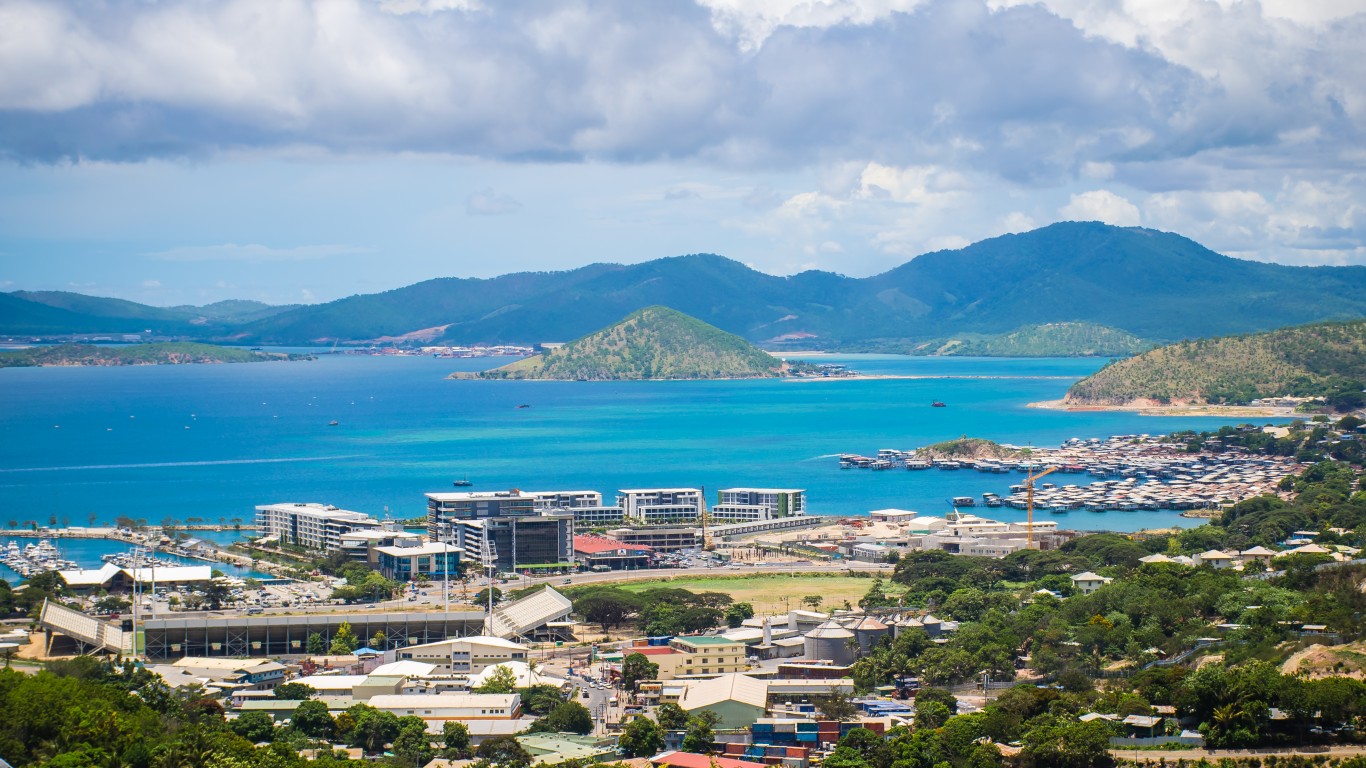
22. Papua New Guinea
> Value of oil trade: 10.7% of GDP
> Oil exports, 2020: $3.7 billion
> Oil imports, 2020: $412.5 million
> GDP, 2020: $38.4 billion
> Total population: 8.9 million
The Papua New Guinea government raised concerns last fall over Australian-based Santos Ltd.’s takeover of Port Moresby-based Oil Search Ltd. The government said the deal could give a foreign company too much control over the country’s oil and gas resources. The country’s top export is petroleum gas, and its leading import is refined petroleum.
[in-text-ad-2]
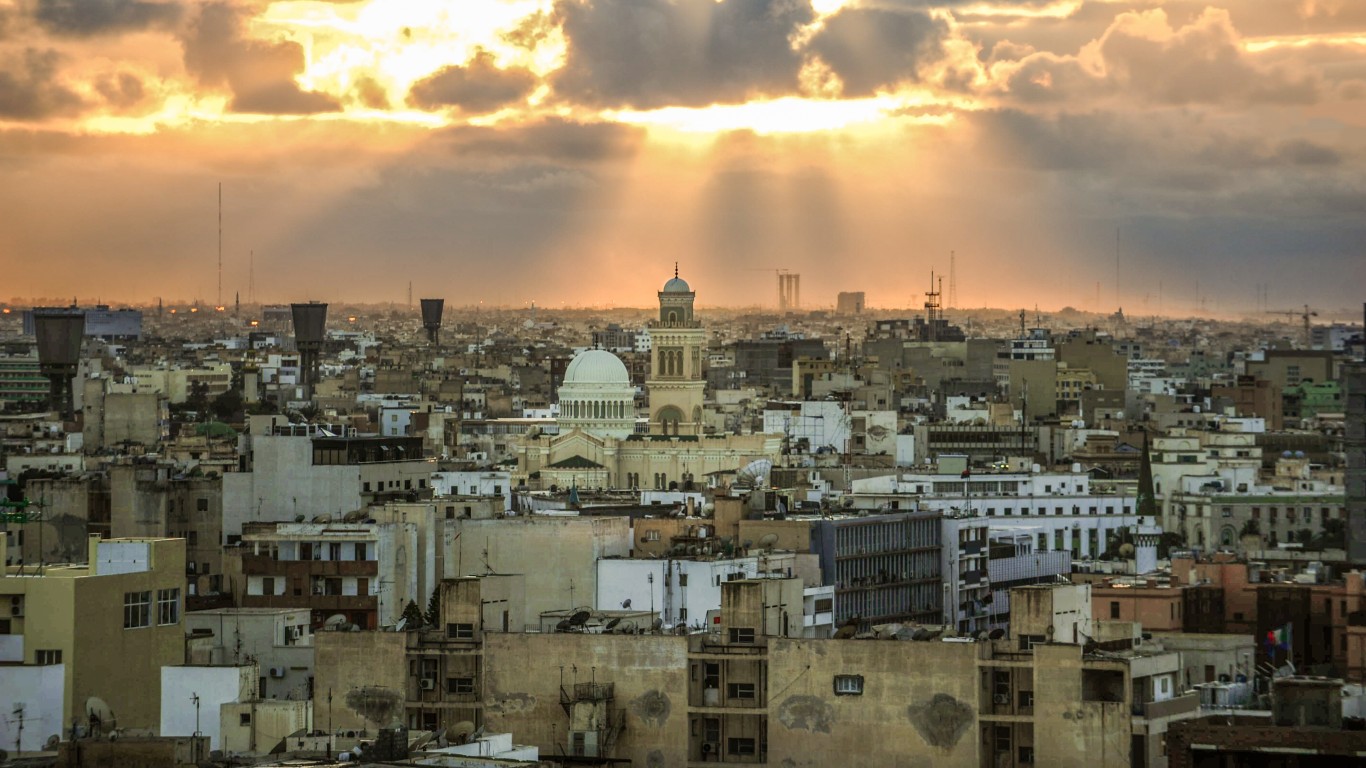
21. Libya
> Value of oil trade: 10.7% of GDP
> Oil exports, 2020: $6.3 billion
> Oil imports, 2020: $1.7 billion
> GDP, 2020: $74.5 billion
> Total population: 6.9 million
There are concerns a renewed civil war could erupt in Libya, imperiling its oil industry. In early March, Libya’s national oil company said an armed group shut down two major oil fields, causing the country’s daily oil production to drop by 330,000 barrels. Crude petroleum is by far Libya’s leading export, and refined petroleum is its top import.
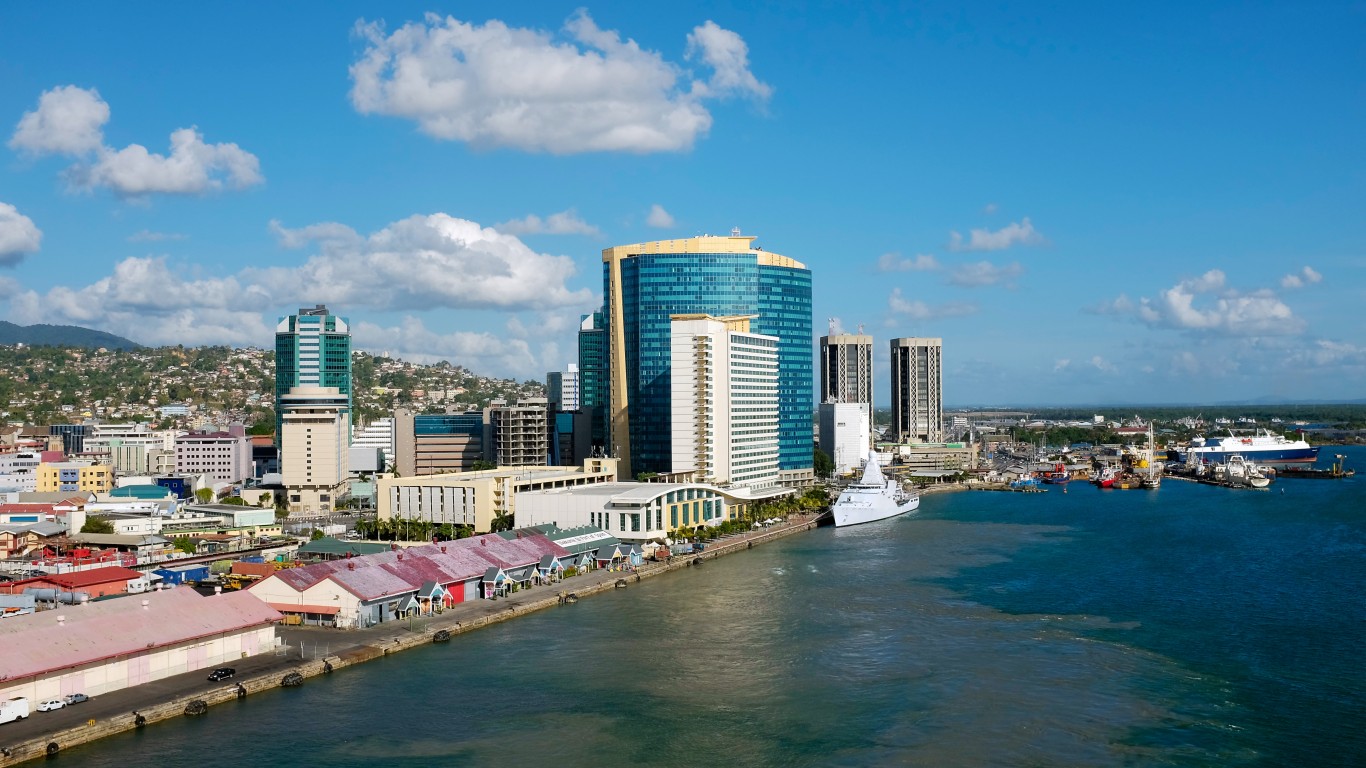
20. Trinidad and Tobago
> Value of oil trade: 10.8% of GDP
> Oil exports, 2020: $3.1 billion
> Oil imports, 2020: $668.6 million
> GDP, 2020: $35.0 billion
> Total population: 1.4 million
Oi industry publication Industrial Info said there are 34 oil and gas production projects worth $1 billion in progress in Trinidad and Tobago in 2022. These are drilling and infrastructure ventures, along with investments in onshore projects. The country’s leading export is petroleum gas, and its main import is refined petroleum.
[in-text-ad]

19. Seychelles
> Value of oil trade: 11.8% of GDP
> Oil exports, 2020: $118.5 million
> Oil imports, 2020: $181.5 million
> GDP, 2020: $2.5 billion
> Total population: 98,462
Oil companies from Japan and Australia have eyed exploration of offshore oil fields off the Seychelles Islands in recent years. These areas are about 40 miles east and west of Mahe, the main island of the archipelago in the Indian Ocean. Hydrocarbon exploration has been conducted in the Seychelles since the early 1970s. Refined petroleum is its second-leading import.

18. United Arab Emirates
> Value of oil trade: 12.4% of GDP
> Oil exports, 2020: $69.9 billion
> Oil imports, 2020: $12.1 billion
> GDP, 2020: $660.4 billion
> Total population: 9.9 million
The United Arab Emirates is estimated to possess the seventh-largest amount of proven oil and natural gas reserves. The UAE produces an average of 3 million barrels of petroleum and liquids per day with oil reserves of 100 billion barrels. Oil industry profits and royalties provide most of the nation’s government revenue. The top export is crude petroleum.
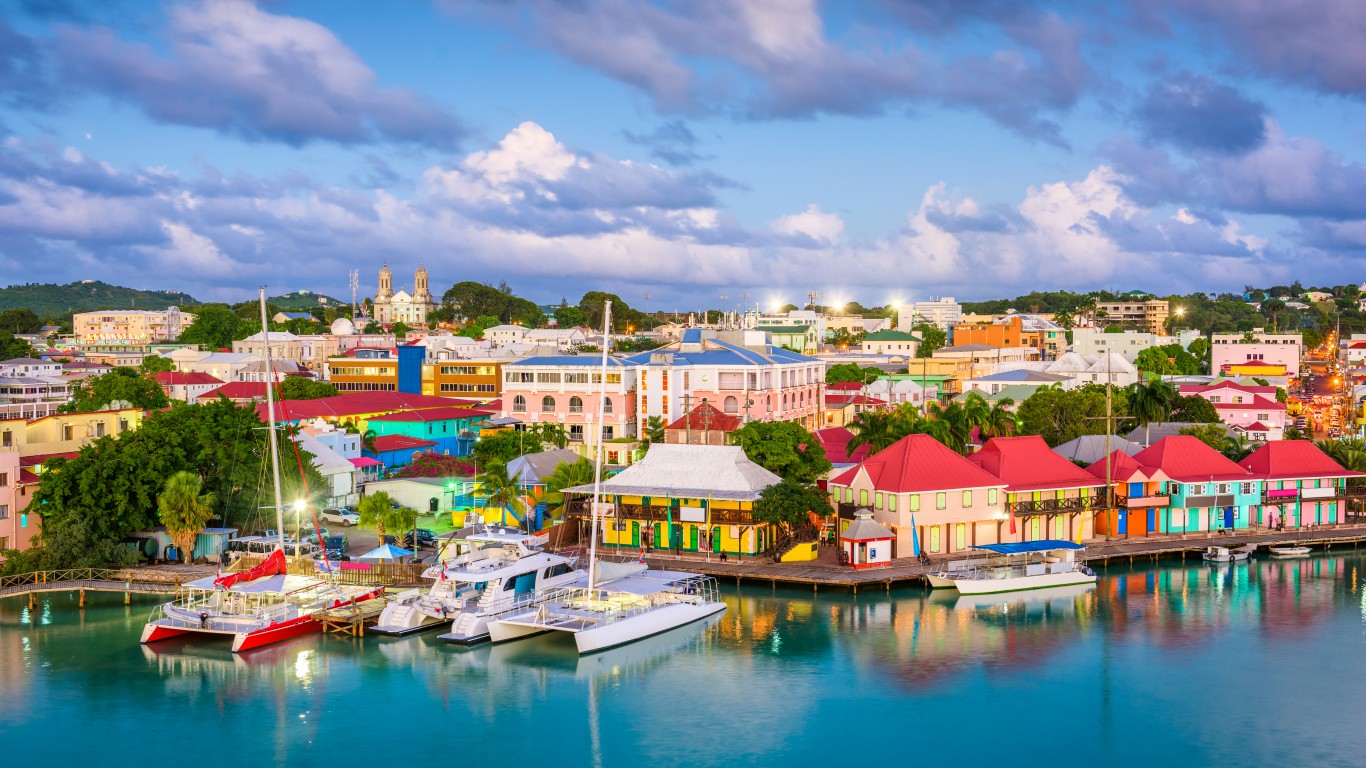
17. Antigua and Barbuda
> Value of oil trade: 12.4% of GDP
> Oil exports, 2020: $20.1 million
> Oil imports, 2020: $201.9 million
> GDP, 2020: $1.8 billion
> Total population: 97,928
Antigua and Barbuda has no sources of oil or natural gas. The Caribbean country is largely dependent on imported oil to produce electricity. It imports about 4,500 barrels of oil per day. The top import in Antigua and Barbuda is refined petroleum.
[in-text-ad-2]

16. Norway
> Value of oil trade: 13.3% of GDP
> Oil exports, 2020: $41.3 billion
> Oil imports, 2020: $3.6 billion
> GDP, 2020: $337.0 billion
> Total population: 5.4 million
Norwegian offshore oil was first discovered in 1969 and now accounts for between 40% to 70% of exports. Equinor, Norway’s major oil company, more than doubled its revenues in the third quarter of 2021 compared with the same period in 2020 because of slower demand early on in the pandemic. Equinor, which is two-thirds state owned, also announced in November that it discovered a new find north of the Tyrihans field off the coast of Norway. It is thought to hold 62 billion barrels of crude. The top exports of Norway are crude petroleum and petroleum gas.
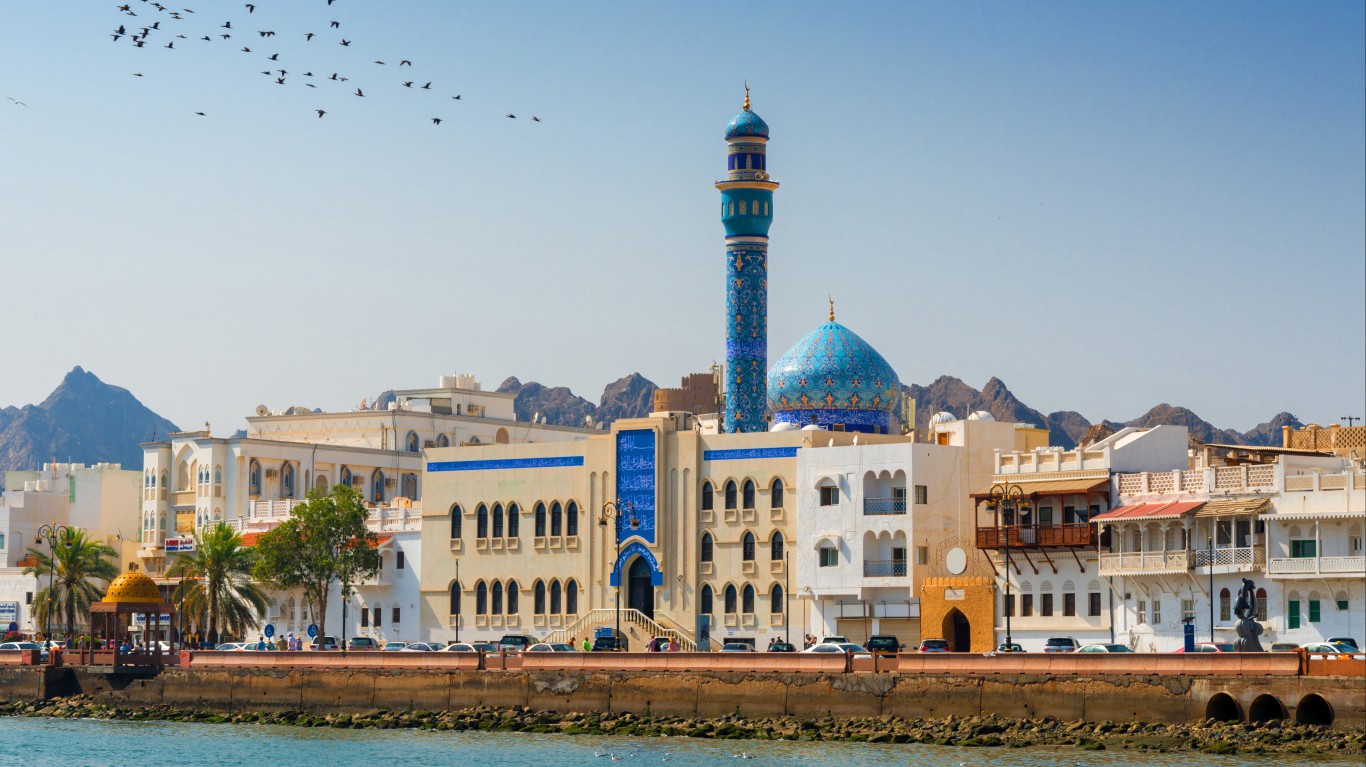
15. Oman
> Value of oil trade: 13.4% of GDP
> Oil exports, 2020: $20.2 billion
> Oil imports, 2020: $1.0 billion
> GDP, 2020: $158.9 billion
> Total population: 5.1 million
Oman has been producing oil since 1967 and is capable of pumping 1 million barrels a day. Oman exports most of its oil to China, the world’s largest oil importer. The government gets about 70% of its annual budget from oil and gas revenue. State-owned Petroleum Development Oman holds most of the nation’s oil reserves and is Oman’s largest oil and gas operator. Occidental Petroleum of the United States is the second-largest operator in Oman. The leading three exports of Oman are crude petroleum, petroleum gas, and refined petroleum.
[in-text-ad]

14. Iraq
> Value of oil trade: 13.8% of GDP
> Oil exports, 2020: $50.0 billion
> Oil imports, 2020: $2.7 billion
> GDP, 2020: $382.4 billion
> Total population: 40.2 million
Iraq’s oil minister Ihsan Abdul-Jabbar said in a statement Friday that the nation can guarantee crude-oil exports of more than 3.3 million barrels per day from its southern locations. The second-biggest manufacturer of oil in OPEC aims to leverage higher energy costs to help its economy. Oil revenue is critical for Iraq as it rebuilds its economy. The Ministry of Oil reported that March crude-oil exports climbed to more than 3.24 million barrels per day, with revenue totaling $11.7 billion, the highest since 1972. Iraq’s leading export is crude petroleum.
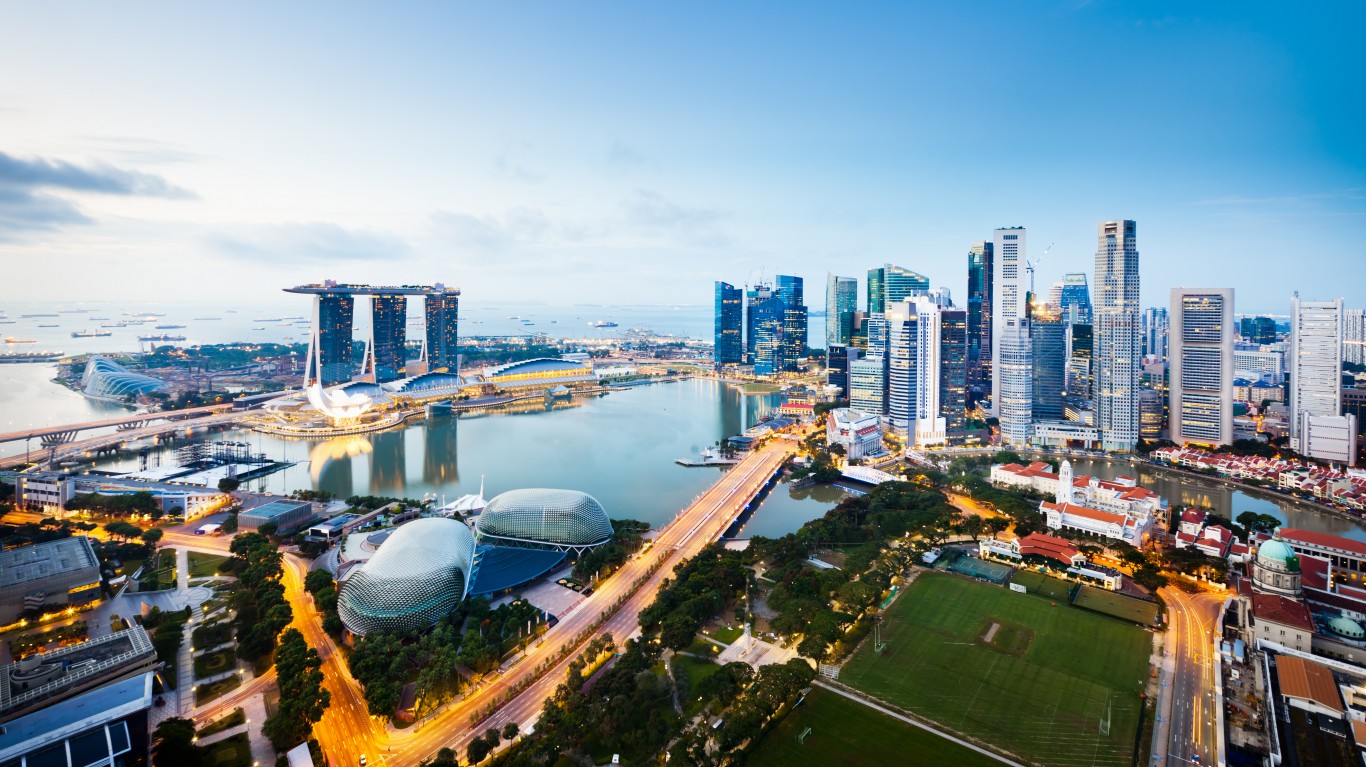
13. Singapore
> Value of oil trade: 14.1% of GDP
> Oil exports, 2020: $30.9 billion
> Oil imports, 2020: $47.9 billion
> GDP, 2020: $560.2 billion
> Total population: 5.7 million
Singapore is one of the most important shipping centers in Asia and one of the world’s top oil- trading and refining hubs, with a total crude oil refining capacity of 1.5 million barrels per day. Refined petroleum is its second-biggest export and import. The economy is heavily dependent on exports, and petroleum products are one of its main exports. Refined petroleum is the second-largest export and import in Singapore.

12. Qatar
> Value of oil trade: 14.9% of GDP
> Oil exports, 2020: $38.3 billion
> Oil imports, 2020: $367.7 million
> GDP, 2020: $259.2 billion
> Total population: 2.9 million
The market for oil and gas in Qatar is expected to grow at an annual rate of more than 1% during the five-year forecast period ended 2025. Most of Qatar’s oil- and gas-producing fields are in the Persian Gulf. Petroleum gas, crude petroleum, and refined petroleum are the country’s main exports. In December, the country announced it was basing its 2022 fiscal budget on an average oil price estimate of $55 a barrel, up from $40 in 2021. West Texas Intermediate crude-oil futures were trading $94.07 on April 11. The top three exports of Qatar are petroleum gas, crude petroleum, and refined petroleum.
[in-text-ad-2]

11. Tuvalu
> Value of oil trade: 17.3% of GDP
> Oil exports, 2020: $150
> Oil imports, 2020: $9.5 million
> GDP, 2020: $54.9 million
> Total population: 11,792
Tuvalu is an island nation in the Polynesian section of Oceania in the Pacific Ocean. The country lacks proven oil reserves, and its economy is very vulnerable to oil price shocks. In a Reuters story in 2012, Tuvalu ran afoul of the U.S. government when Iran, seeking to evade U.S. sanctions, reflagged its oil tankers under the Tuvalu flag. Refined petroleum is the third-biggest import in Tuvalu.

10. Kuwait
> Value of oil trade: 17.4% of GDP
> Oil exports, 2020: $34.8 billion
> Oil imports, 2020: $356.9 million
> GDP, 2020: $202.0 billion
> Total population: 4.3 million
Tiny Kuwait, invaded by Iraq in 1990, has an estimated 94 billion barrels of proven oil reserves, or 9% of the world’s total. The oldest and largest of Kuwait’s oil fields is the Greater Burgan field in southeastern Kuwait, which produces about 1.6 million barrels of oil a day. The nation has a current production capacity of about 3.15 million barrels per day. The Kuwait Petroleum Corp. said it intends to increase oil production capacity to 4.75 million barrels a day by 2040. The top exports of Kuwait are crude petroleum, refined petroleum, petroleum gas.
[in-text-ad]
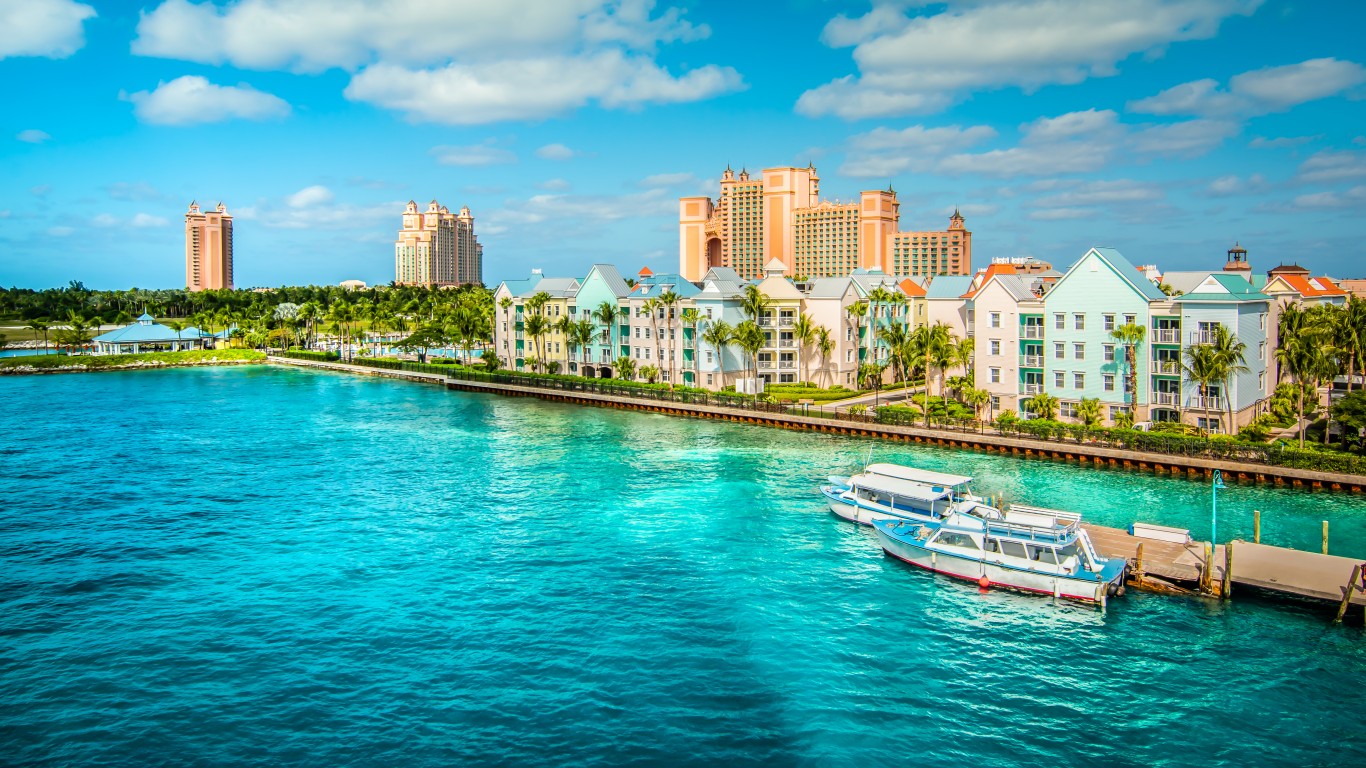
9. The Bahamas
> Value of oil trade: 19.1% of GDP
> Oil exports, 2020: $393.8 million
> Oil imports, 2020: $2.0 billion
> GDP, 2020: $12.8 billion
> Total population: 393,248
According to a recently released report from the Inter-American Development Bank the Bahamas is the biggest importer in the Latin American and Caribbean region of gas and oil from Russia, as a percentage of the island nation’s total imports. The country’s portion of total imports from Russia is 2.6%, all of it oil and gas.The data was based on 2019 figures. The top export and import in the Bahamas is refined petroleum.
In other oil news pertaining to the Bahamas, in February, Challenger Energy Group, the former Bahamas Petroleum Co., said the Bahamas will only play a minor role in its operations for the foreseeable future after its first exploratory well failed to strike oil.
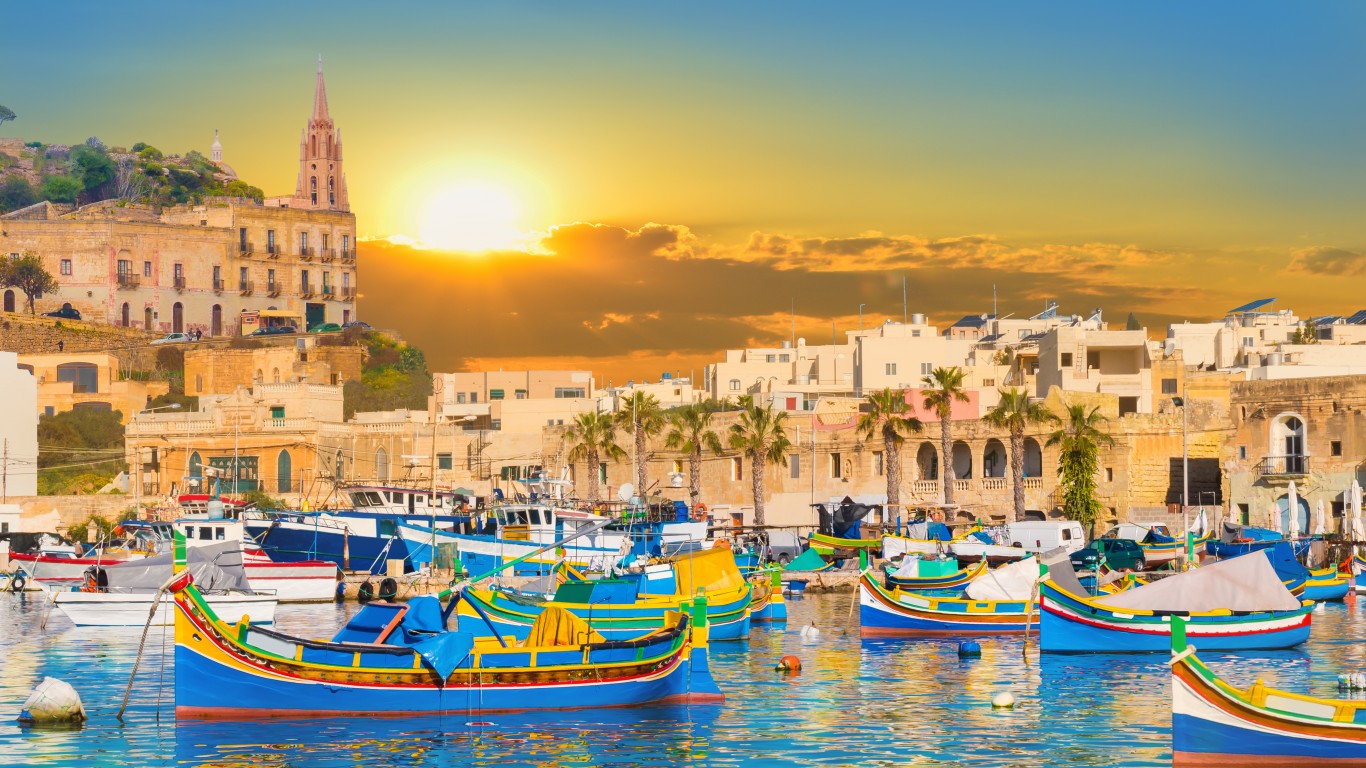
8. Malta
> Value of oil trade: 19.6% of GDP
> Oil exports, 2020: $408.7 million
> Oil imports, 2020: $3.9 billion
> GDP, 2020: $21.9 billion
> Total population: 525,285
Malta, an island nation south of Sicily in the Mediterranean Sea, has become a major transhipment point — including oil — since about the mid-1980s. Malta and Tunisia have had discussions in the past about oil exploration on the continental shelf between their two countries. Offshore exploration began in the 1970s but no commercial discovery has been made. The top import of Malta is refined petroleum.

7. Republic of the Congo
> Value of oil trade: 20.2% of GDP
> Oil exports, 2020: $3.9 billion
> Oil imports, 2020: $92.3 million
> GDP, 2020: $20.0 billion
> Total population: 5.5 million
The African nation, which became an OPEC member in 2018, has 2.9 billion barrels of proven crude oil reserves. It is the sub-Saharan region’s third-largest oil producer after Nigeria and Angola. Congo has a production capacity of 336,000 barrels per day. The top export of the Republic of the Congo is crude petroleum.
[in-text-ad-2]

6. Liberia
> Value of oil trade: 20.3% of GDP
> Oil exports, 2020: $9.5 million
> Oil imports, 2020: $1.5 billion
> GDP, 2020: $7.4 billion
> Total population: 5.1 million
The Liberian tanker fleet became the world’s largest in the fall of 2021 in terms of gross tonnage. The fleet’s size is 57.4 million in gross tonnage. The Liberian government is also encouraging exploration of oil within the country. The Liberia Petroleum Regulatory Authority, along with the National Oil Company of Liberia, has offered 33 offshore blocks in two basins to oil companies. The top import of Liberia is refined petroleum.

5. Togo
> Value of oil trade: 25.8% of GDP
> Oil exports, 2020: $391.5 million
> Oil imports, 2020: $4.4 billion
> GDP, 2020: $18.4 billion
> Total population: 8.3 million
The western African nation of Togo has no proven oil reserves. According to CIA estimates from 2015, Togo consumes 13,100 barrels of oil per day. Refined petroleum is the top export and import in Togo.
[in-text-ad]

4. Brunei Darussalam
> Value of oil trade: 26.6% of GDP
> Oil exports, 2020: $5.8 billion
> Oil imports, 2020: $1.8 billion
> GDP, 2020: $28.7 billion
> Total population: 437,483
Brunei Darussalam, a tiny country located on the island of Borneo in the Pacific, holds 1.1 billion barrels of proven oil reserves as of 2016, ranking 39th in the world. It produces more than 121,000 barrels of oil per day. One of the nation’s famed landmarks is the Billionth Barrel Monument, commemorating the billionth barrel of oil produced at the Seria oilfield, which was accomplished in 1991. The top exports and imports of Brunei are petroleum gas and refined petroleum.
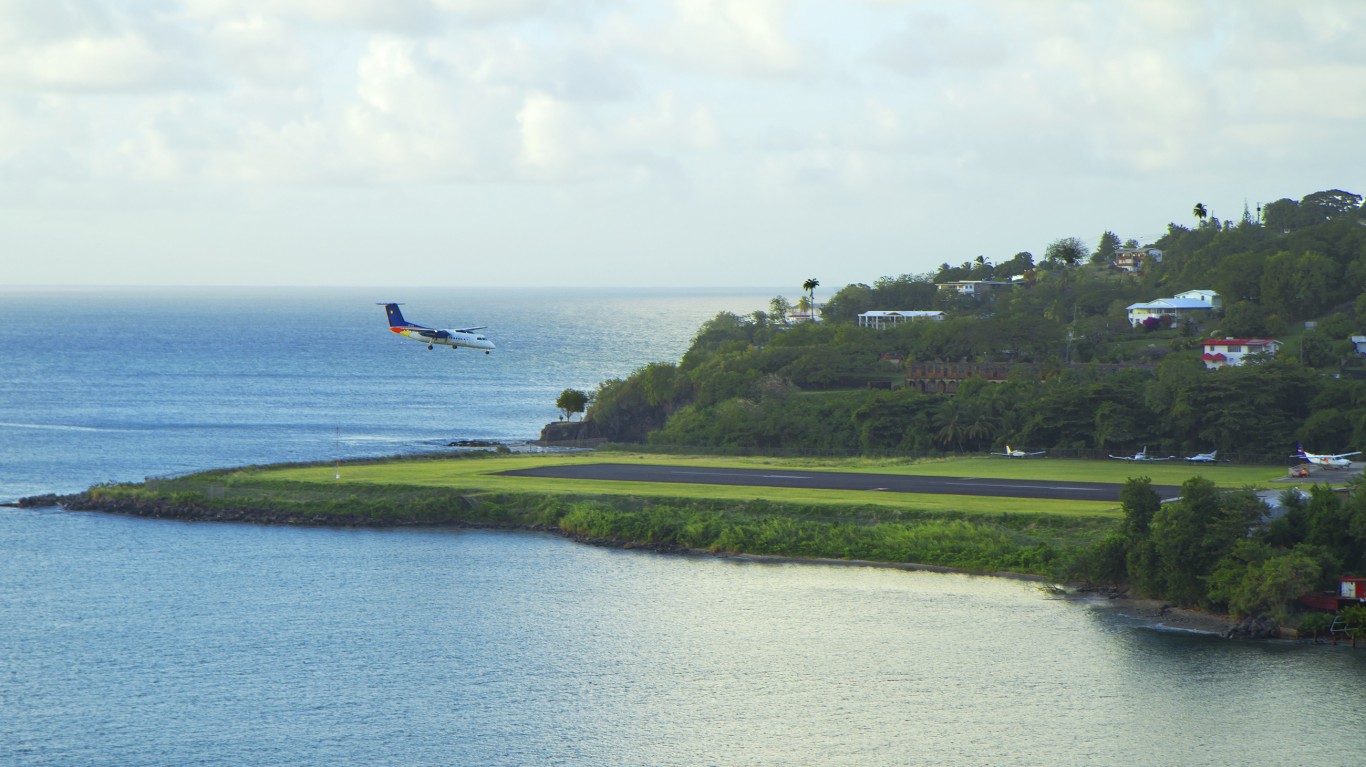
3. St. Lucia
> Value of oil trade: 33.7% of GDP
> Oil exports, 2020: $6.3 million
> Oil imports, 2020: $779.2 million
> GDP, 2020: $2.3 billion
> Total population: 183,629
St. Lucia, an island nation in the Caribbean Sea north of Trinidad and Tobago, is vulnerable to various external shocks, including dependence on foreign oil. The nation has no proven reserves of oil. The country’s top export is refined petroleum, and the leading import is crude petroleum.
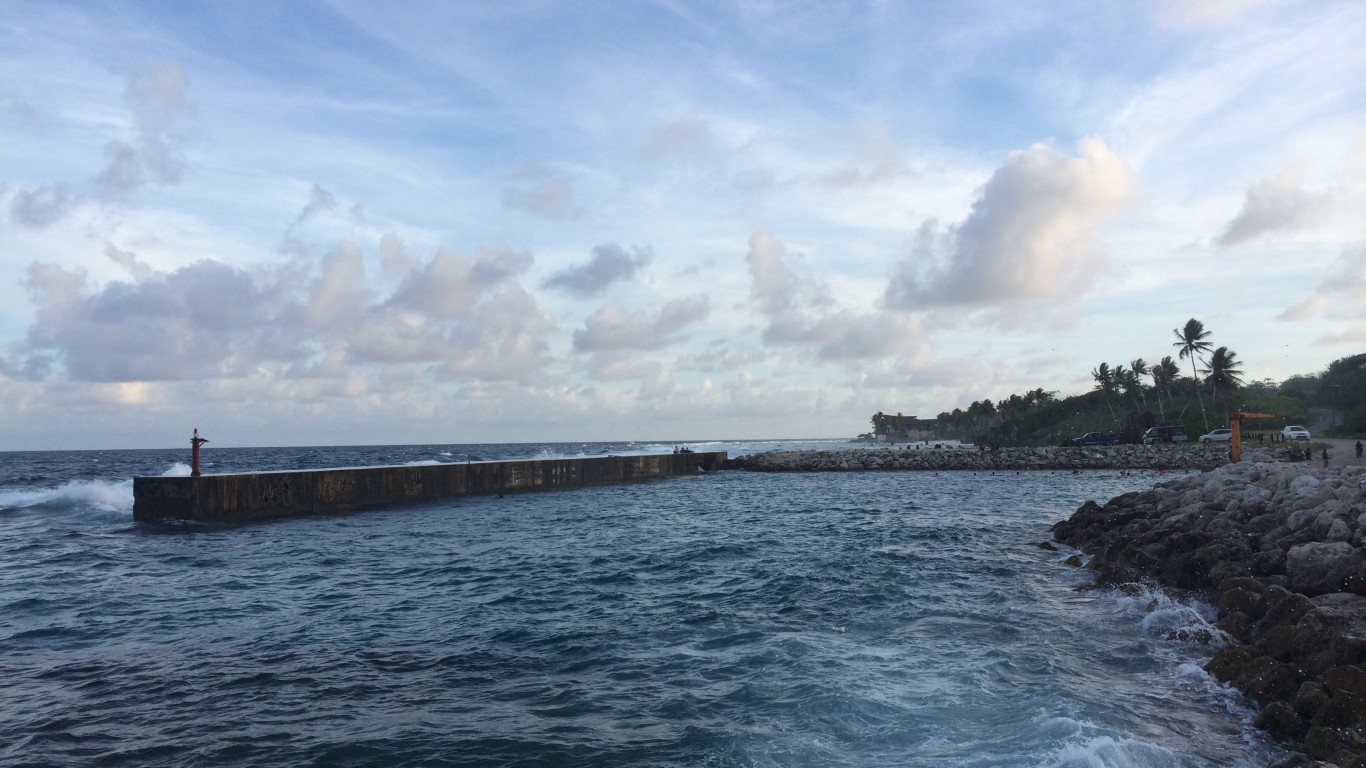
2. Nauru
> Value of oil trade: 37.7% of GDP
> Oil exports, 2020: $846
> Oil imports, 2020: $58.5 million
> GDP, 2020: $155.4 million
> Total population: 10,834
Nauru, an island nation in the South Pacific Ocean, is south of the Marshall Islands. It is the third-smallest country in the world behind the Holy See (Vatican City) and Monaco. The nation of fewer than 10,000 people has no proven oil reserves. It consumed 469 barrels per day of oil as of 2016. The top import of Nauru is refined petroleum.
[in-text-ad-2]
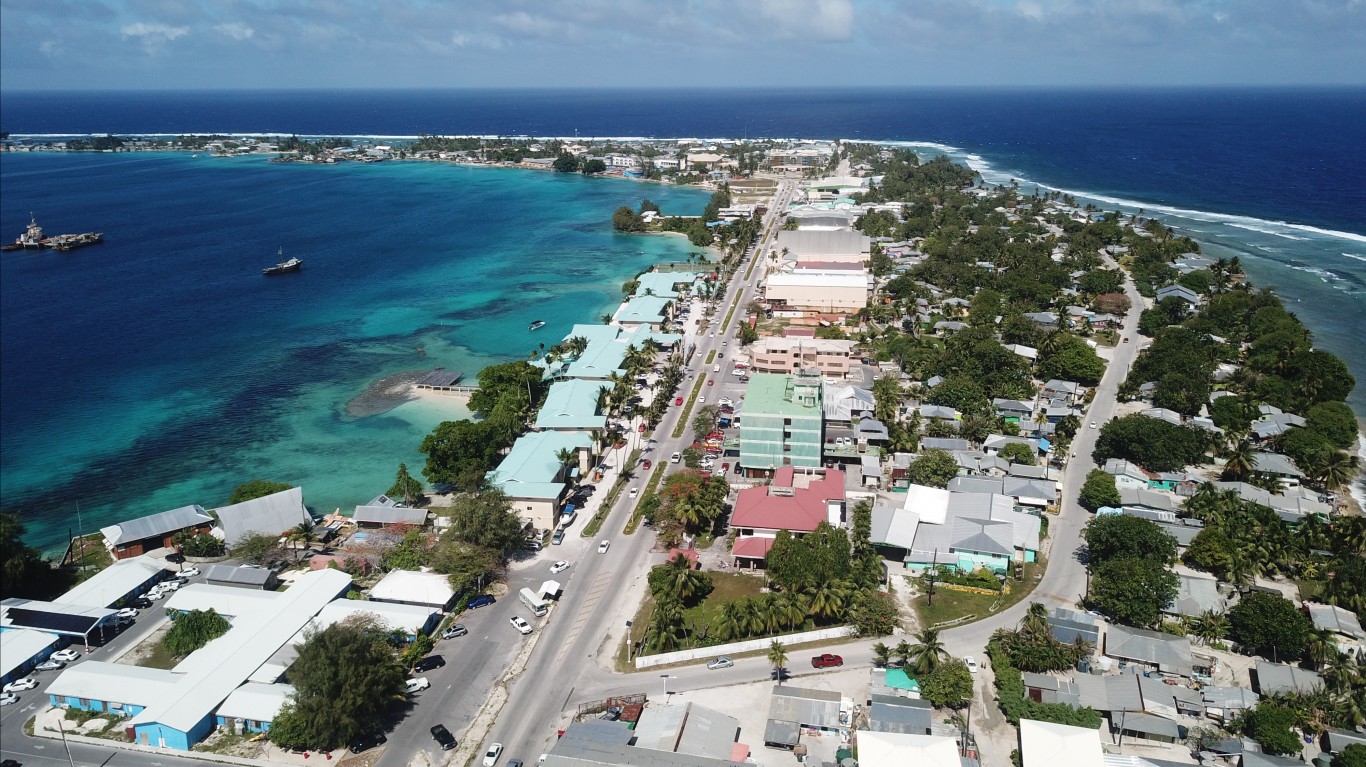
1. Marshall Islands
> Value of oil trade: 378.9% of GDP
> Oil exports, 2020: $22.6 million
> Oil imports, 2020: $907.7 million
> GDP, 2020: $245.5 million
> Total population: 59,194
The Marshall Islands, an island country near the Equator in the Pacific Ocean, is the nation most dependent on oil. In 2016, the Marshall Islands became one of the leading destinations for U.S. crude exports even though that nation did not have a refinery to process oil. The Marshall Islands became a destination for oil after the U.S. removed restrictions on exporting U.S. crude in December 2015. With a population of about 50,000 people, the nation is not the final destination for the importation of oil but a transfer point for other ships bound for Asian ports.
Methodology:
To determine the countries most dependent on the oil trade, 24/7 Tempo reviewed data on oil imports and exports from the the Observatory of Economic Complexity, an online data visualization and distribution platform. Countries were ranked based on the total value of oil imports and exports in 2020 as a percentage of their gross domestic product.
Data on GDP in 2020 is from the World Bank, estimated using the purchasing power parity method in current international dollars. Oil import and export data includes all products classified within the Harmonized System code 27, representing all mineral fuels, mineral oils, and the products of their distillation. Population data in 2020 is also from the World Bank.
100 Million Americans Are Missing This Crucial Retirement Tool
The thought of burdening your family with a financial disaster is most Americans’ nightmare. However, recent studies show that over 100 million Americans still don’t have proper life insurance in the event they pass away.
Life insurance can bring peace of mind – ensuring your loved ones are safeguarded against unforeseen expenses and debts. With premiums often lower than expected and a variety of plans tailored to different life stages and health conditions, securing a policy is more accessible than ever.
A quick, no-obligation quote can provide valuable insight into what’s available and what might best suit your family’s needs. Life insurance is a simple step you can take today to help secure peace of mind for your loved ones tomorrow.
Click here to learn how to get a quote in just a few minutes.
Thank you for reading! Have some feedback for us?
Contact the 24/7 Wall St. editorial team.
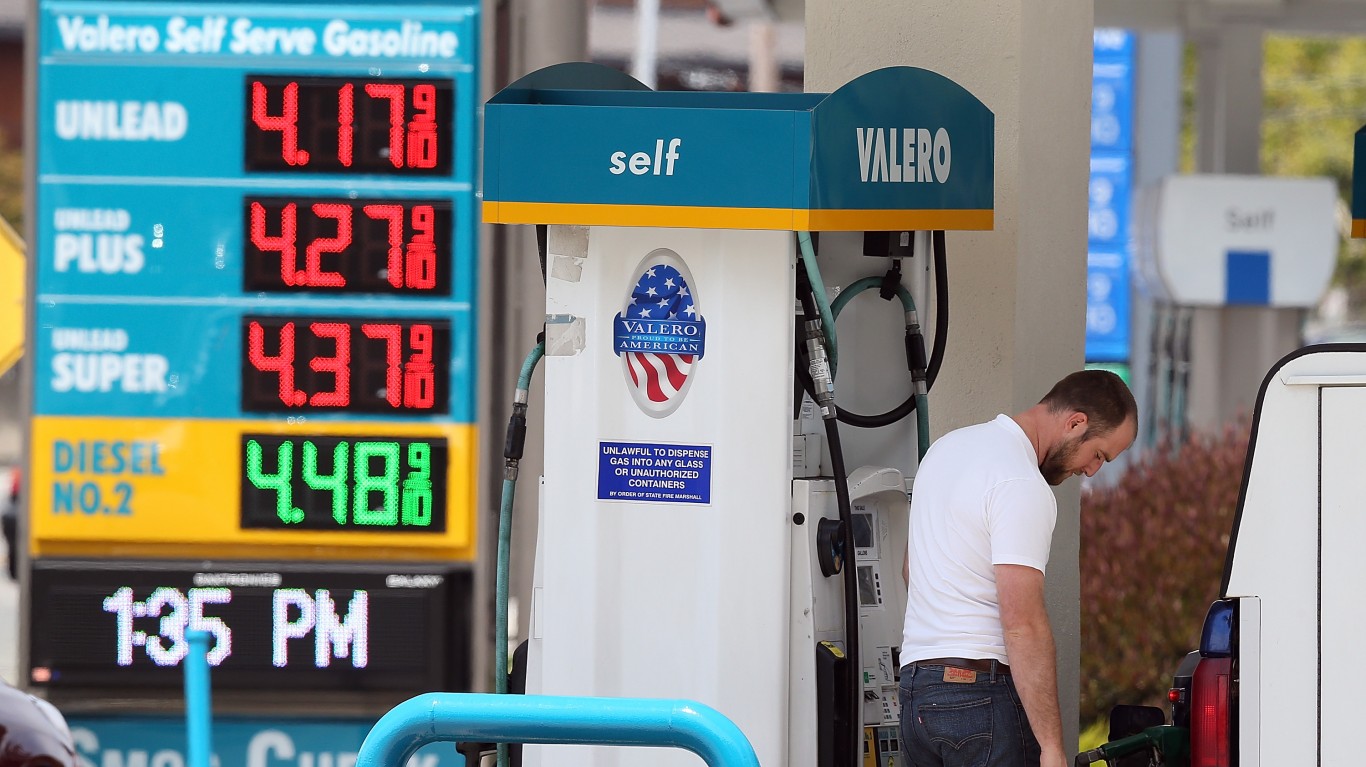 24/7 Wall St.
24/7 Wall St. 24/7 Wall St.
24/7 Wall St.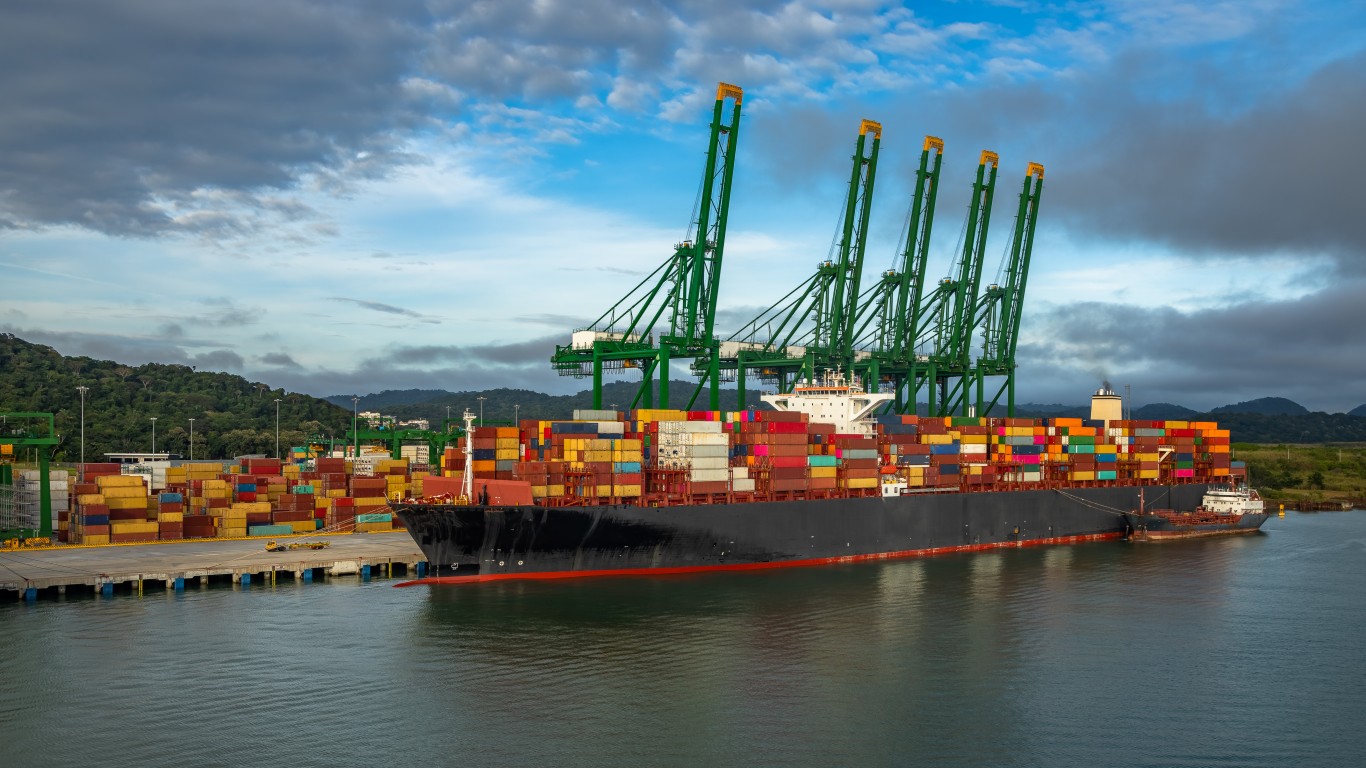 24/7 Wall St.
24/7 Wall St.

